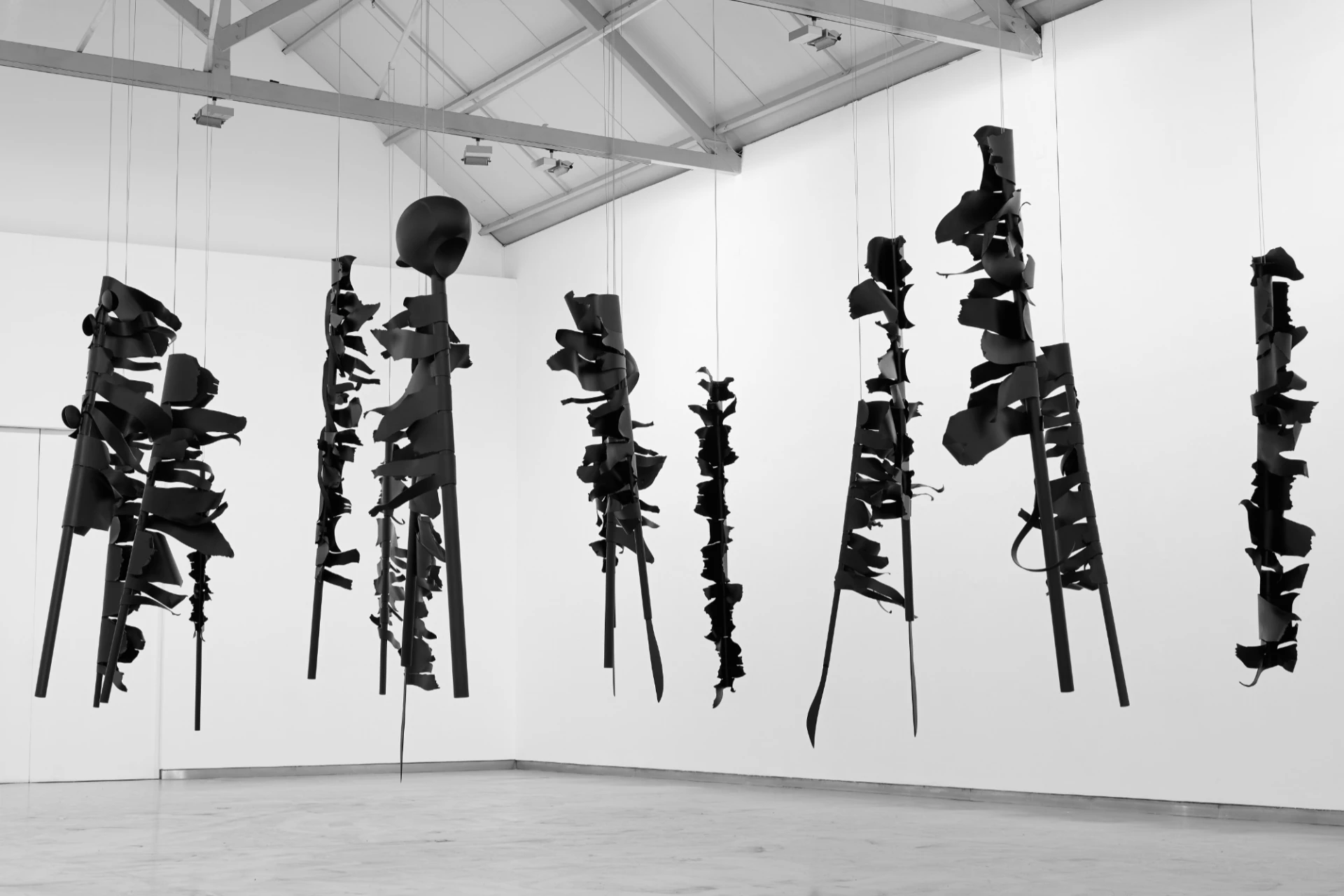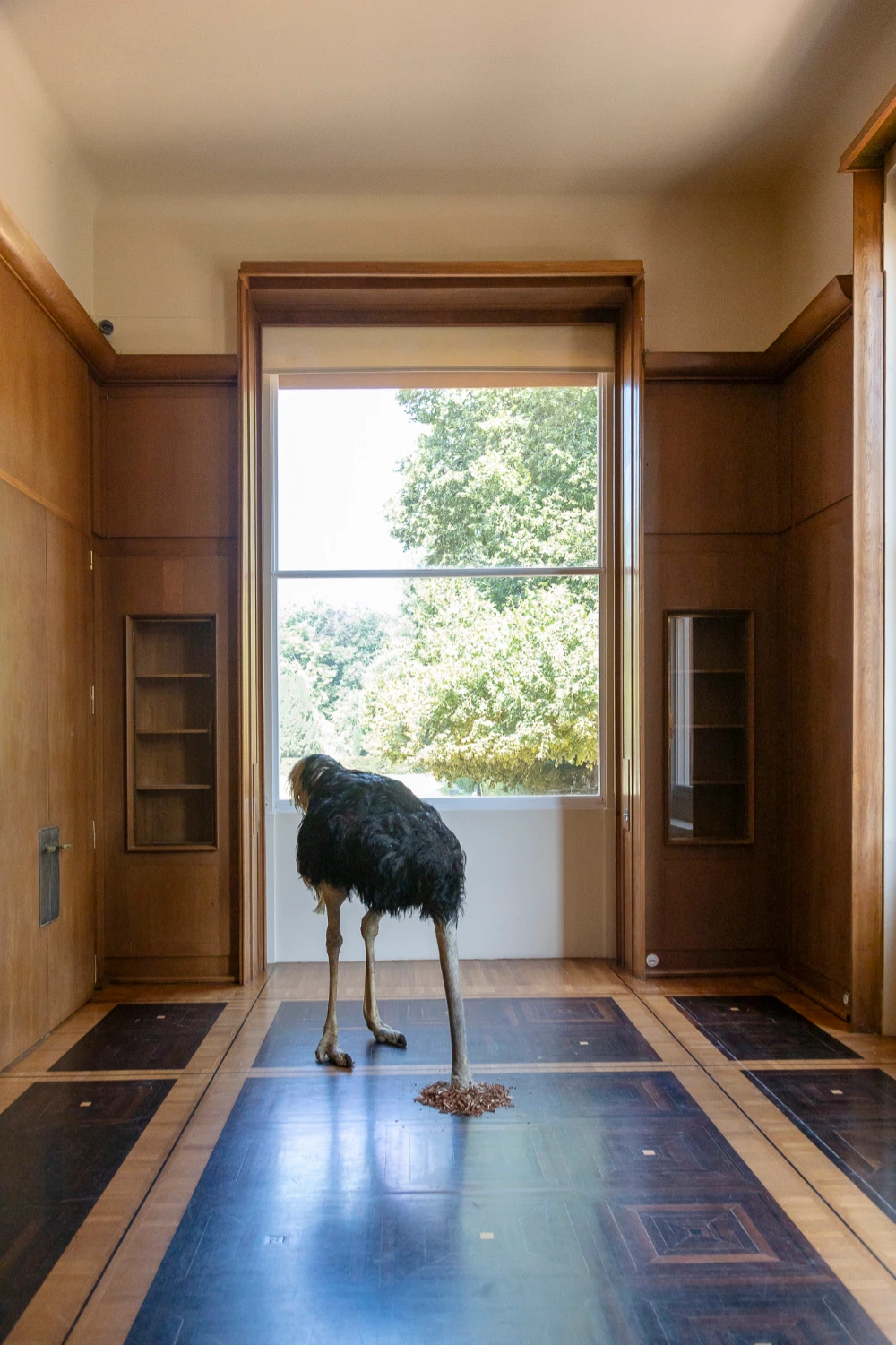article
Atlânticos, at the Museu da Língua Portuguesa
The exhibition Atlânticos (Atlantics) is born from a common ground: the shared space between voices, bodies, and geographies that meet at the Estação da Luz. A historic stage for arrivals and departures, the space carries in its ironwork and footsteps the memory of the transit of people, words, and worlds. It is in this place of passage that the exhibition rises, proposing a reflection on the intimate and the collective, on the language that unites and the experiences that differentiate.
The choice of Patio B, open and freely accessible, reinforces this intention. What is common cannot be locked away. What is common is the spoken and preserved language, the breath that crosses Angola, Brazil, and Portugal; it is also the shared ground, made of earth, memory, and sea. Through videos, sculptures, and installations, the project transforms the space into a contemporary square, an agora of multiple voices. The visitor is invited to participate in a dialogue that transcends art and approaches the idea of crossing and belonging.
More than an exhibition, Atlânticos results from a shared experience. During the residency at Fazenda da Serrinha, the artists shared ten days of listening and creation, allowing themselves to be traversed by the landscape, sounds, and gestures of the other. From this experience sprang the works that now occupy the Museu da Língua Portuguesa (Museum of the Portuguese Language).
The artists who compose Atlânticos also share a desire: to take the exhibition to Luanda first, and only then to Coimbra. Angola, Brazil, and Portugal form here three shores that seek each other. The exhibition acknowledges that the Portuguese language, more than a European legacy, is a mixed tapestry, forged by the diaspora and the Black Atlantic.
In this sense, it echoes a song by Caetano Veloso: "I like to feel my tongue brush against the tongue of Luís de Camões, I like to be and to exist." The phrase is not only a celebration, but also an awareness. Language is body, it is friction, it is contamination.
Shirley Paes Leme, Inês Moura, Wyssolela Moreira, Jorge das Neves, Jonathas de Andrade, and Gegé M'Bakudi present a diverse range of materials: video, photography, clay, bronze, aluminum, and fabric.
Located within this flow, the works spread like an expanded grammar: a common language woven between the ground and the body, between iron and speech, between Angola, Brazil, and Portugal. More than celebrating the Portuguese language, the exhibition investigates its multiple modes of existence—its crossroads, its colonial memories, and its possibilities for reinvention.
The first work that immediately strikes the visitor is Stairway to Infinity II, by Shirley Paes Leme, constructed from collected twigs cast in bronze. Arranged against the wall, the stairs condense the gesture of passage. Depending on the perspective, they are train tracks or crossroads, evoking the rhythm of those who depart and return. The artist transforms the ephemeral into permanence and proposes a dialogue with Jonathas de Andrade: he narrates the country from the social and political image of the collective body; she through the matter that resists time.
In the second entrance, Enterolobium, by Inês Moura, presents brick and tamboril seed fragments cast in aluminum, accompanied by a reading of the poem The Journeys, by José Tolentino. The work proposes a poetic archaeology of memory, where the seeds are not relics, but prayers. Above them, Wyssolela Moreira's cyanotypes on fabric hover like suspended maps, connected by a network that makes language a tapestry of resonances.
Elsewhere, Jonathas de Andrade presents an alphabet that, between the playful and the brutal, reveals the tension between sign and body. His work, centered on sugarcane extraction, transforms the vocabulary of labor into critical language, reenacting Brazil through the harshness of its own history.
At the main entrance, from the street, Jorge das Neves's Você, tu, também (You, you, too) is a wall of words molded in bricks. Literal and symbolic, the work inscribes language in space, reminding us that all architecture is also language. Between clay and word, the installation proposes a common foundation: the collective construction of the language that runs through the exhibition.
Finally, in Gegé M'Bakudi's video, the gaze turns to man and what has been silenced within him. Between fire and rebirth, the Angolan artist explores the body as a field of memory and resistance, rethinking masculinity as language and not as a prison. Their work is a gesture of healing and openness, where the sensitive becomes a political force.
The exhibition is born not only from the act of displaying, but from a shared experience. In Serrinha, the artists shared ten days of immersion, exchanging practices, listening, and presence. From there, the seeds that now flourish in the courtyard of the Museu da Língua Portuguesa emerged, with free access and open to the street. Significantly, Atlânticos takes place there, where trains and voices intersect: the space of passage, of the common, of the encounter between the intimate and the public.
In times of the São Paulo Biennial, whose theme is plurality, the exhibition is uniquely situated, proposing the same debate from another perspective. We congratulate the curatorial team for the power of this encounter, which sprouts from common ground and rises as a celebration of the voices that cross the Atlantic. Plurality is not a concept, but a practice: it is in the earth, in matter, and in listening. The works and the artists are well-titled, for they name what needs to be named. Ultimately, language is also about that, the act of naming things.
The exhibition can be visited at the Museu da Língua Portuguesa, in São Paulo, until November 2.
ADVERTISING
Previous
article

28 Oct 2025
Rui Chafes: nineteen axes to believe in fire
By Frederico Vicente
Next
article

28 Oct 2025
Maurizio Cattelan’s 'Sussurro': Smirking in the Haunted House
By Orsola Vannocci Bonsi
Related Posts
